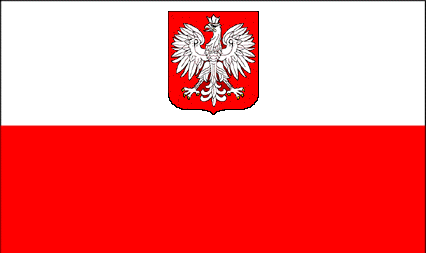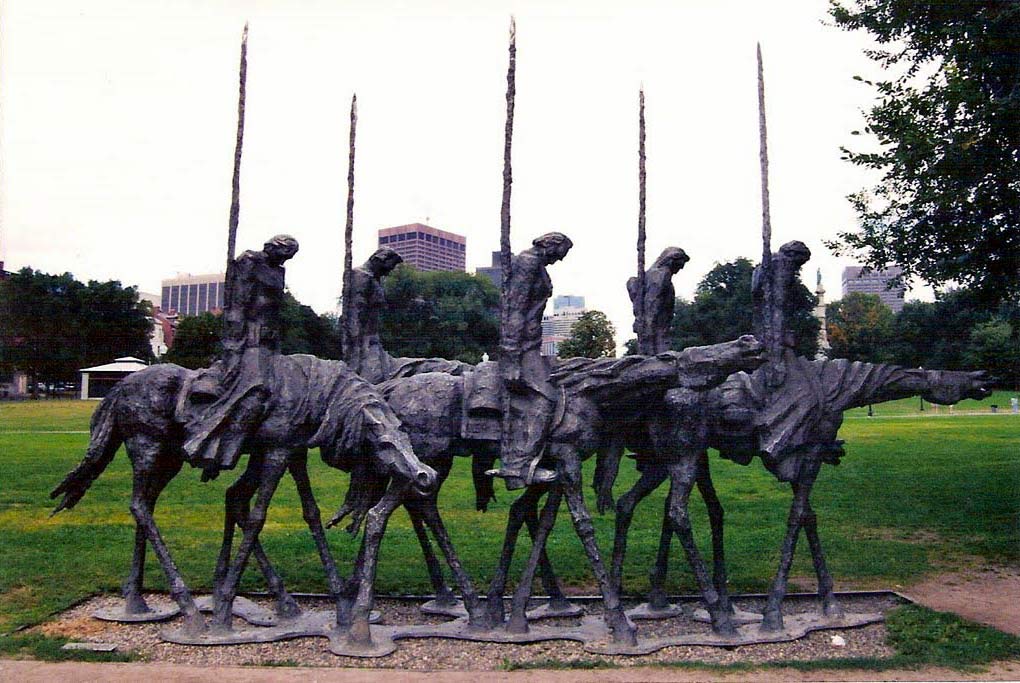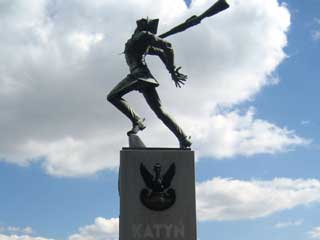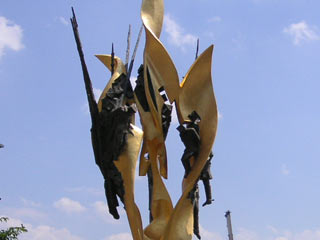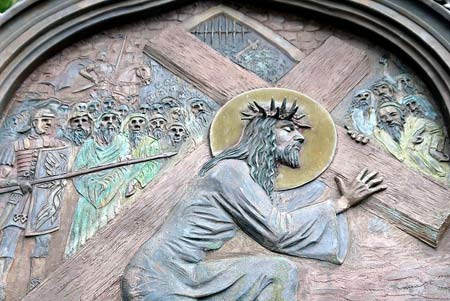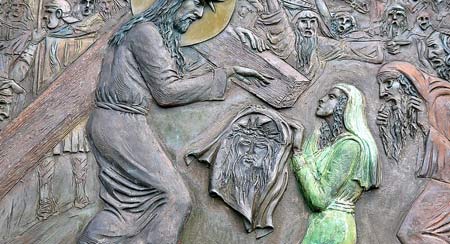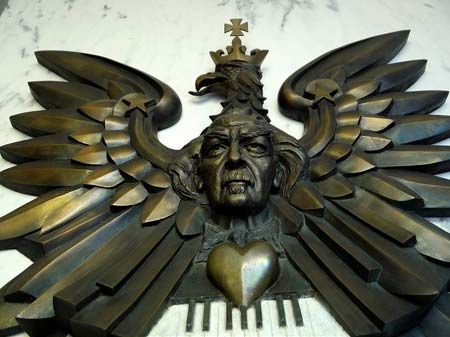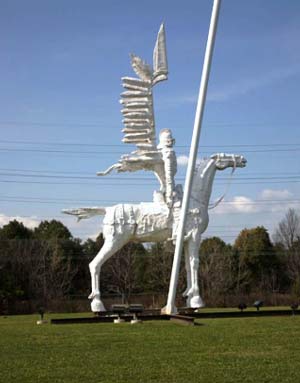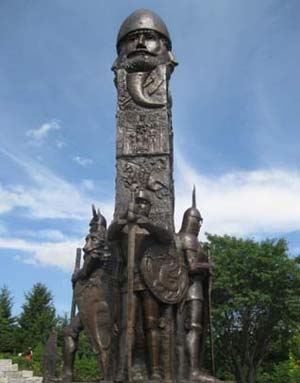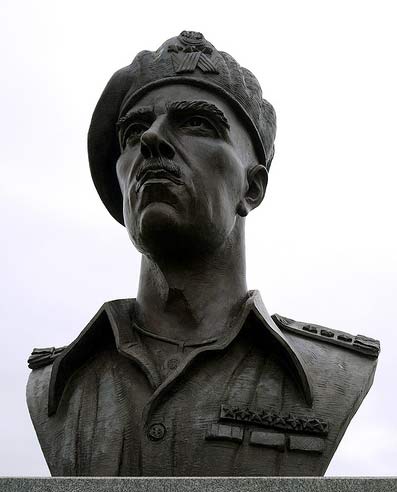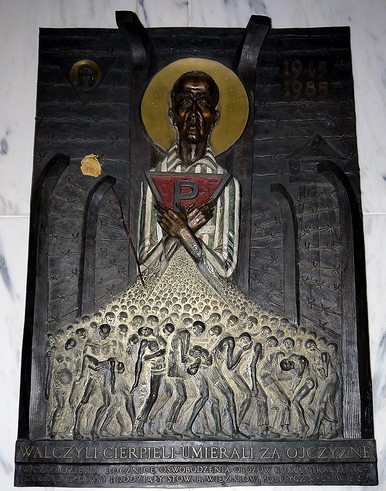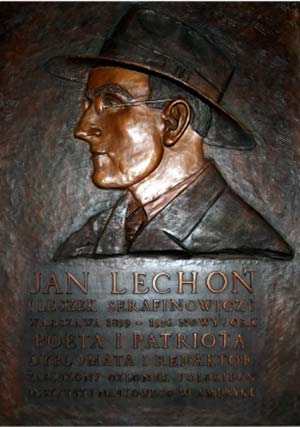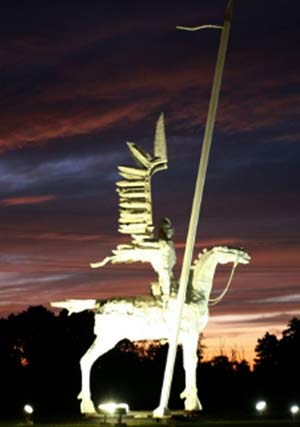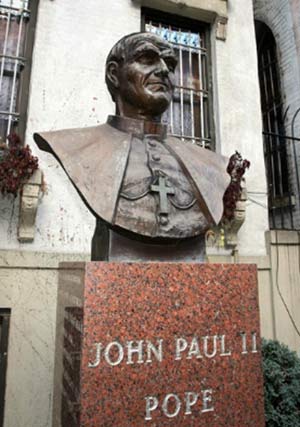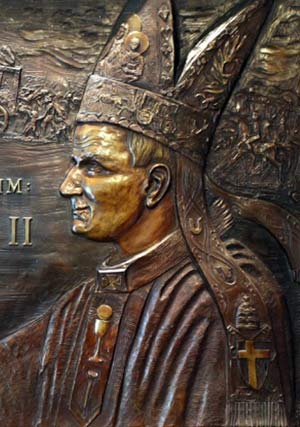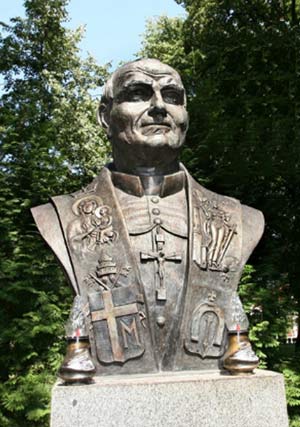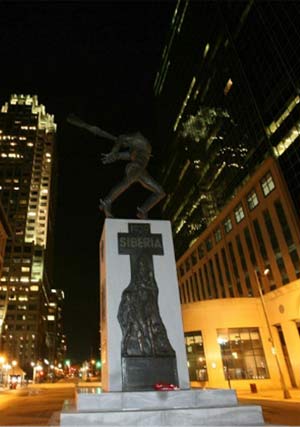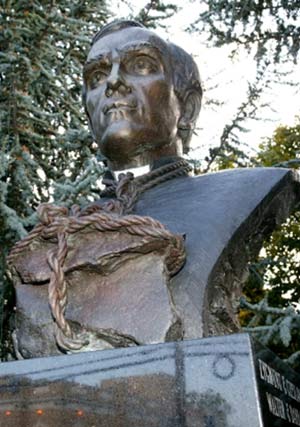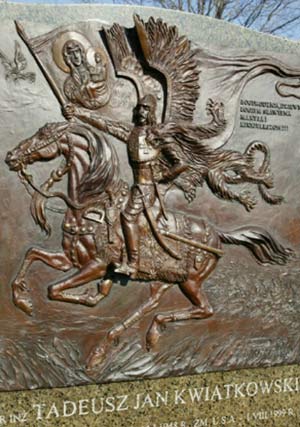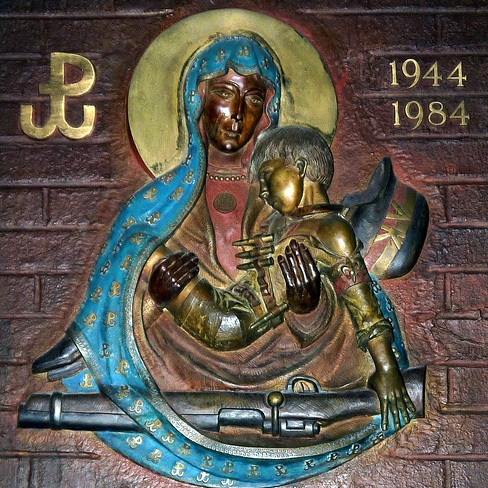
|
This bronze plaque of Our Lady of the Home Army (Matka Boska AK) was created by Andrzej Pitynski in 1984. It is sometimes referred to as Our Lady of the Uprising (Matka Boska Powstancza).
Pityński also created a memorial located at the site of one of the Home Army strongholds in Warsaw.
The Warsaw Uprising (Polish: powstanie warszawskie) was a major World War II operation by the Polish resistance Home Army (Polish: Armia Krajowa) to liberate Warsaw from Nazi Germany. The rebellion was timed to coincide with the Soviet Union's Red Army approaching the eastern suburbs of the city and the retreat of German forces. However, the Soviet advance stopped short, enabling the Germans to regroup and demolish the city while defeating the Polish resistance, which fought for 63 days with little outside support.
About 16,000 members of the Polish resistance were killed and about 6,000 badly wounded. In addition, between 150,000 and 200,000 Polish civilians died, mostly from mass murders.
700,000 people were expelled from the city. 150,000 civilians were sent to forced labor camps in Germany. 55,000 civilians were sent to concentration camps, including 13,000 to Auschwitz.
|
|
|
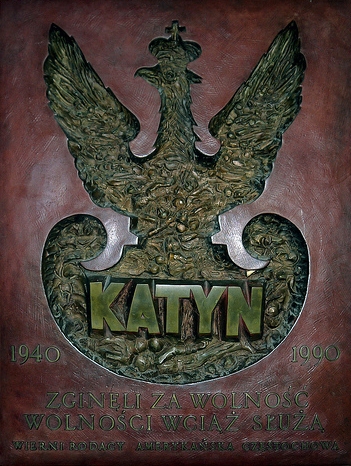
|
This Katyn Forest Massacre bronze plaque was created by Andrzej Pityński in 1990.
The Katyn Forest Massacre was a mass execution of Polish nationals carried out by the Soviet secret police NKVD in April–May 1940.
It was based on Lavrentiy Beria's proposal to execute all members of the Polish Officer Corps, dated 5 March 1940.
This official document was approved and signed by the Soviet Politburo, including its leader, Joseph Stalin.
The number of victims is estimated at about 22,000, the most commonly cited number being 21,768.
The victims were murdered in the Katyn Forest in Russia, the Kalinin and Kharkov prisons and elsewhere.
About 8,000 were officers taken prisoner during the 1939 Soviet invasion of Poland, 6,000 police officers, with the rest being Polish intelligentsia arrested for allegedly being "intelligence agents, gendarmes, landowners, saboteurs, factory owners, lawyers, officials and priests".
|
|
|
